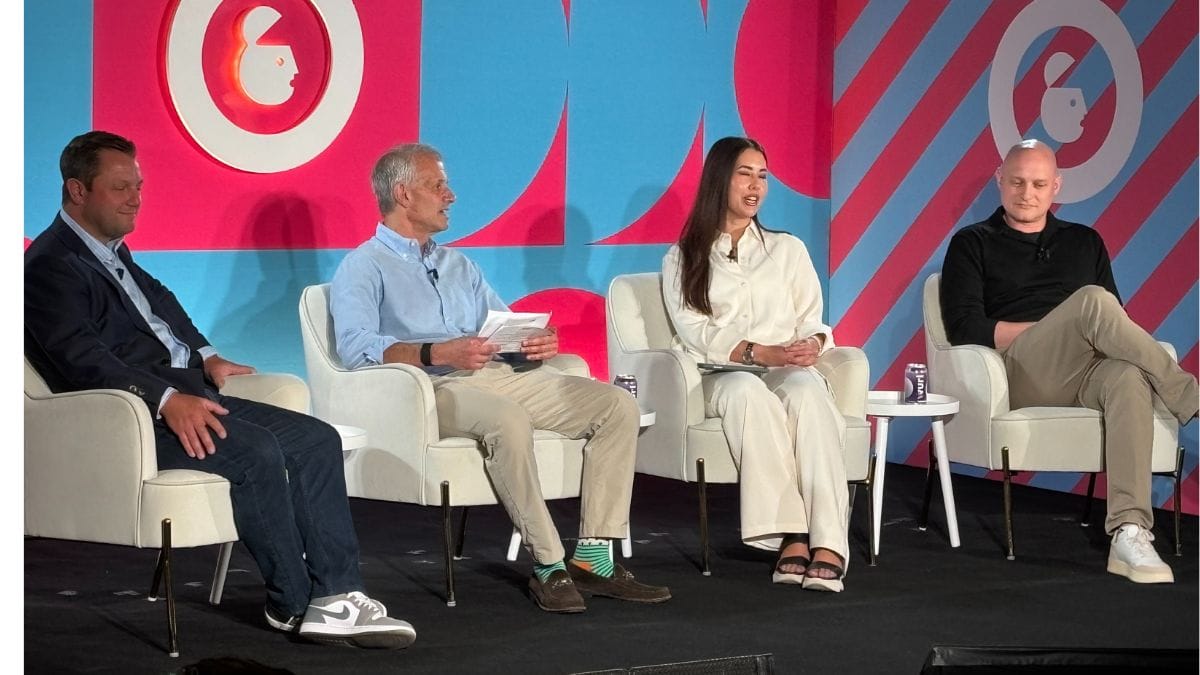Panel Looks At Balancing Art And Science In CTV Advertising
‘It’s always great to optimize toward data points, but to be able to have that human emotional connection, I think, is still really important,’ said Esther Maguire of LG Ad Solutions

Advertising has frequently been described as a combination of art and science, and that dichotomy is especially true with advertising on connected TV.
CTV enables advertisers to run the artful commercials designed to make rational and emotional pitches for products we’ve seen for years on traditional TV, while also allowing for greater degrees of targeting, interactivity and measurement.
In a panel at Advertising Week in New York on Tuesday led by Alan Wolk, the chief analyst at TVRev, marketers discussed the balance between creativity and technology when using this relatively new channel. The consensus tended to be that a blend was likely to be most effective.
“It’s always great to optimize toward data points, but to be able to have that human emotional connection, I think, is still really important,” said Esther Maguire, head of product marketing and strategy at LG Ad Solutions.
CTV creates a premium, lean-back environment she said, and emotion “helps build increases in ad recall, favorability, brand recognition, different KPIs. So it’s awareness versus performance.” McGuire added. “Does everything have to be very evocative, creating an emotional pull? Not necessarily, but it’s always helpful.”
Greg Sherrill, group VP at Magnite, said that the technology gives advertisers new creative options, such as sequential creative with messaging that follows people over the course of the day. The importance of establishing an emotion connection depends on the brand being advertised, he added, and whether it is a product bought on impulse or one that’s more expensive requiring more consideration.
“I don’t think there’s a one-size-fits-all for these different brands,” Sherrill said.
Jon Mansell, VP, U.S. demand at FreeWheel, noted that in this digital era, different viewers are frequently served different ads while watching the same programming, which makes it hard for advertisers to create a shared conversation. An exception, for now, happens during the Super Bowl, he noted.
The panelist recalled a Super Bowl spot for Tubi that made it look like someone had changed the channel, sending viewers scrambling for their remote controls.
“That was an incredible experience for everybody. The next day at work it was "Did you see that?,” he said. When Super Bowl ads are sold programmatically, that sort of shared experience might not happen.
Mansell noted that technology is creating new ad formats. One popular format is the pause ad, which appears on the TV screen when the viewer pushes the pause button on the remote.
“Pause ads are part of the arsenal. I don’t think they’re the end-all, be-all. Obviously they have legitimate questions about attention: why was the content paused in the first place,” he said. “But nonetheless, it is on the screen and it is valuable for certain use cases. Part of what is native to CTV is knowing the user experience and matching the creative to that experience.”
Testing new formats is important, McGuire said. “We think it’s a really great user experience, because it is user initiated and it is the most relevant thing that they see before pressing play again,” she said. “But it’s really about what you want your KPI to be. How are you going to measure it?”
Sherrill added that there are a number of companies producing different types of ads for CTV that offer interactive experiences and home shopping to take advantage of the streaming environment.
Wolk asked whether the goal of CTV advertising should be branding or driving short-term sales.
“I think that CTV is always going to be a reach-first vehicle, with a component of performance. I think the phone is always going to be where you measure the performance of a CTV campaign to a large degree," said Mansell.
Wolk also asked whether brands were inclined to go with hard data rather than investing the time and money needed to do the kind of storytelling that builds brands.
McGuire said that cost could be a barrier to using CTV for some advertisers. “It takes a lot of time and thought to create something original,” she said. But technologies including dynamic creative optimization and social synch are enabling advertisers to repurpose social video assets and transform them into high-quality CTV ads at a nominal cost.
Magnite recently bought a company called streamr.ai that uses artificial intelligence to create ads for brands cheaply and quickly, Sherrill said.
“It’s amazing to watch how you can have a 30-second creative made in moments for a brand,” Sherrill said. “You could take a bar or restaurant that could never have the funds to be an advertiser and make a beautiful 30-second spot that’s going to resonate. That opens up a world of possibilities for all of these publishers that have amazing high-quality, sometimes niche, content to get these SMBs into the marketplace.”
# # #
The upfronts still matter to NBCUniversal. The company announced that it will be returning to Radio City Music Hall on Monday May 11 for its 2026 upfront presentation.
The presentation will mark 100 years of NBC. It will include Versant, the cable network company being spun off from Comcast. NBCU continues to sell ads for the Versant networks including MSNBC, USA and Syfy.
NBCU’s Telemundo unit will be hosting what the company called an “exclusive client experience” on May 12.
“For over 100 years, NBC has defined the U.S. television landscape for generations of viewers,” said Mark Marshall, Chairman, NBCUniversal Global Advertising & Partnerships. “As we head into our centennial year, we’re not just celebrating our legacy – we’re setting the course for what’s next. This Upfront, we’ll showcase the future of advertising, content, and technology, highlighting NBCUniversal’s leadership in innovative ad solutions and tapping into the full power of our ecosystem to unlock new possibilities for brands, creators, and audiences.”

